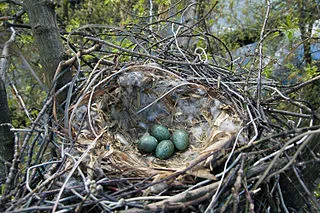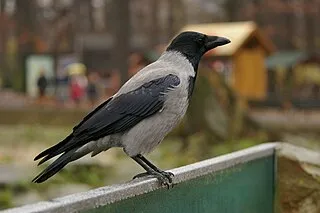The Hooded Crow (Corvus cornix) stands out as one of the most intelligent birds you can keep as a pet. While debates rage among parrot enthusiasts about the “smartest” bird, my decades of experience with corvids—from hand-rearing nestling American Crows and Blue Jays as a child to working with exotic relatives at the Bronx Zoo—convinces me that crows, ravens, and jays deserve top honors. These birds rival great apes in tool-making and problem-solving, as confirmed by recent studies. If you’re an experienced aviculturist seeking a responsive, captivating companion, the friendliest birds like the Hooded Crow could be ideal, though they’re large, active, and pricey—not for novices.
 Hooded crow, light colored
Hooded crow, light colored
Once spotted, the Hooded Crow’s striking appearance is unforgettable. Its head, wings, chest, and tail gleam with glossy black feathers typical of corvids, contrasted beautifully by light to dark gray plumage on the body—sometimes called “dirty gray” but adding unique charm. Measuring nearly 2 feet long with a 36- to 40-inch wingspan, this bird demands respect and space.
Hooded Crow Description and Subspecies
Long viewed as a color morph of the Carrion Crow (Corvus corone), the Hooded Crow is now a recognized distinct species, with four subspecies identified. Its bold pattern makes it instantly recognizable across its vast range.
Range and Habitat
Hooded Crows thrive from Great Britain to western Asia, reaching just south of the Arctic Circle down to Mediterranean coasts. Winter migrants head to northern India, southern China, Iran, and Afghanistan. Adaptable to open forests, wooded scrub, farms, villages, grasslands, desert edges, and even cliffside woods at 3,000 feet, they excel in diverse environments. This versatility translates well to captivity for dedicated owners.
 Nest
Nest
Breeding Behavior
Hooded Crows build intricate nests far beyond simple “stick nests.” Starting with stout sticks and sometimes animal bones—sparking local superstitions—they layer moss, grasses, roots, then line the cup with feathers, fur, wool, or rags. Clutches of 2-7 eggs incubate for 18-20 days, with fledging at 4-5 weeks. Understanding this highlights their engineering prowess, akin to their wild intelligence.
For pet owners exploring intelligent species, consider how corvids compare to best parrots for beginners, though Hooded Crows demand more commitment.
Intelligence and Behavior as Pets
Casual wild observations reveal extraordinary smarts; lab tests show tool use matching apes. Hooded Crows mimic sounds and words superbly, bond deeply with owners, and obey basic commands. Social yet bold, they may tease dogs, cats, or guests. However, their sensitivity means stress from perceived unkindness lingers—they hold grudges!
Active minds breed mischief: powerful beaks destroy manipulable objects, a natural trait impossible to fully train out. “Crow-proof” rooms meticulously, as if toddler-proofing twice over.
 Opening garbage bag
Opening garbage bag
In flight, they’re majestic, underscoring the need for ample space.
 In flight
In flight
Housing Requirements
Large and hyperactive, Hooded Crows require custom outdoor aviaries or fully equipped indoor rooms—standard macaw cages won’t suffice. Outdoor setups promote vigor; provide heated shelters for winter, noting southern-origin birds may be cold-sensitive. Indoors, position near human activity; they love watching TV or eavesdropping on calls.
Even spacious enclosures demand enrichment: toys, puzzles, and daily human interaction to prevent boredom and maintain tameness. Handling caution is paramount—the beak inflicts severe wounds. Keep face and eyes safe; trust is limited.
 Hooded crow, adult
Hooded crow, adult
Birds like the violet lovebird offer smaller alternatives, but corvids thrive with these rigorous setups.
Diet and Nutrition
Omnivorous with carnivorous tendencies, wild Hooded Crows devour rodents, carrion, eggs, and insects. For pets, blend commercial raptor diets, pigeon pellets, and softbill foods—proven effective in zoos for corvids. Essential additions: whole mice, chicks, or insects for calcium; live crickets for foraging fun. Canned grasshoppers, snails, veggies, nuts, fruits (moderately), and hard-boiled eggs round it out.
Supplements ensure balance, given natural calcium-rich diets. Provide natural sunlight or full-spectrum lighting for vitamin D.
Conclusion
Raising a Hooded Crow rewards experienced owners with unmatched intelligence, mimicry, and companionship—but demands crow-proofing, vast space, stimulation, and precise nutrition. Consult avian vets for tailored advice, sourcing birds ethically. With patience, you’ll gain a lifetime friend rivaling any pet. Explore more bird care tips on our site!
References
- Wikipedia Commons images credited to Andreas Trepte, Bob, Bugaga, Thermos, انفی, and pelican.
- Studies on corvid intelligence: New Caledonian Crow tool use research (e.g., Oxford University avian cognition papers).
- Bronx Zoo corvid care protocols.
- Avian diet guidelines from That Pet Place blogs: African Pied Crow Care, Tool-Using Crows, Japan’s Carrion Crows.
